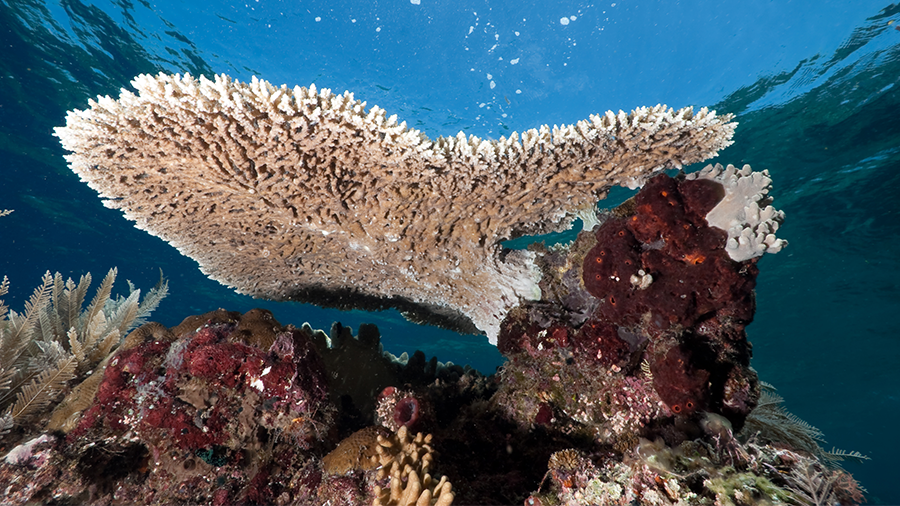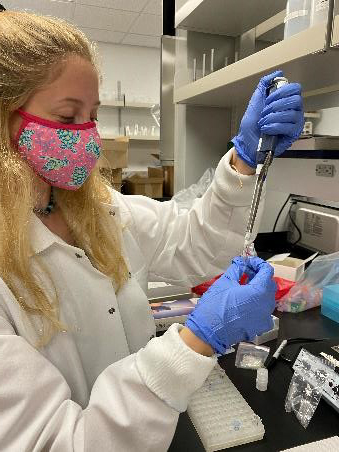Could corals use sound to communicate?
Corals are part of a highly complex ecosystem, but it remains a mystery if and how they might communicate within their biological community. In a new study, researchers found evidence of sound-related genes in corals, suggesting that the marine invertebrates could use sound to interact with their surroundings.
Coral reefs make up less than 1% of the ocean floor yet support more than 25% of all marine life. Around the world, coral reefs are being threatened by climate change, ocean acidification, diseases, overfishing and pollution. A better understanding of coral communication could help inform policies that aim to protect this critical ecosystem.

“A growing number of studies have shown that trees can communicate, and that this communication is important for ecosystems such as rain forests,” said Camila Rimoldi Ibanez, a high school student in the dual enrollment program at South Florida State College. “Coral reefs are often referred to as the rainforests of the sea because of the habitat they provide for a wide variety of plants and animals. Thus, we wanted to find out how coral communicates.”

Ibanez will present the new findings at the American Society for Biochemistry and Molecular Biology annual meeting during the virtual Experimental Biology 2021 meeting, to be held April 27–30. Her mentor is James Hawker, dean of arts and sciences at South Florida State College.
Many organisms that live in coral reefs perceive sound and use it to find their way to the reefs. Based on this information, the researchers decided to look for the presence of genes related to the reception and/or emission of sound in the coral Cyphastrea. Using PCR amplification, the researchers found probable evidence that two of the four genes they examined may be present in coral DNA. The genes they found — TRPV and FOLH-1 — are used for sound emission or reception in sea anemones and freshwater polyps, respectively.
In addition to performing more testing, the researchers want to sequence the TRPV and FOLH-1 genes they found to add additional evidence that these genes, or genes related to them, are present in coral.
“As we learn more about the negative impacts of sound in different kinds of ecosystems, it is vital that we set policies to protect and manage human noises in natural environments,” said Ibanez. “The more we know about how corals communicate, the better we can develop restoration and conservation projects to help corals as they face bleaching epidemics and other threats.”
Ibanez will present the findings in poster R4543.
Enjoy reading ASBMB Today?
Become a member to receive the print edition four times a year and the digital edition monthly.
Learn moreGet the latest from ASBMB Today
Enter your email address, and we’ll send you a weekly email with recent articles, interviews and more.
Latest in Science
Science highlights or most popular articles

The science of staying strong
Muscles power every movement, but they also tell the story of aging itself. Scientists are uncovering how strength fades, why some species resist it and what lifestyle and molecular clues could help preserve muscle health for life.

Bacteriophage protein could make queso fresco safer
Researchers characterized the structure and function of PlyP100, a bacteriophage protein that shows promise as a food-safe antimicrobial for preventing Listeria monocytogenes growth in fresh cheeses.

Building the blueprint to block HIV
Wesley Sundquist will present his work on the HIV capsid and revolutionary drug, Lenacapavir, at the ASBMB Annual Meeting, March 7–10, in Maryland.

Gut microbes hijack cancer pathway in high-fat diets
Researchers at the Feinstein Institutes for Medical Research found that a high-fat diet increases ammonia-producing bacteria in the gut microbiome of mice, which in turn disrupts TGF-β signaling and promotes colorectal cancer.

Mapping fentanyl’s cellular footprint
Using a new imaging method, researchers at State University of New York at Buffalo traced fentanyl’s effects inside brain immune cells, revealing how the drug alters lipid droplets, pointing to new paths for addiction diagnostics.

Designing life’s building blocks with AI
Tanja Kortemme, a professor at the University of California, San Francisco, will discuss her research using computational biology to engineer proteins at the 2026 ASBMB Annual Meeting.

